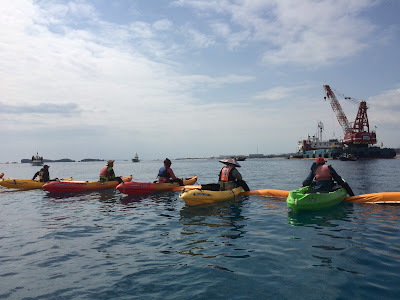Living Peace

The image is from Suicide Cliff in Tinian, where a collection of memorials for those who died in World War II can be found. The text below is the English translation of a poem written by Rinko Sagara, a 14 year old student from Urasoe in Okinawa. She recited it earlier this year at an event meant to remember the victims of the Battle of Okinawa in World War II. It's title is "Ikiru." ******************** I am living. Standing on the earth transmitting the mantle's heat, My body embraced by a pleasant, humid wind, With the scent of grass in my nostrils, My ears tuned to the distant sound of the surf. I am now living How beautiful this island where I now live is. The sparking blue sea, The shining waves releasing spray as they hit the rocks, The bleating of goats, The babbling of brooks, Small paths leading through the fields, Mountains bursting with green colors, The gentle tunes of the sanshin (three-stringed traditional instrumen

